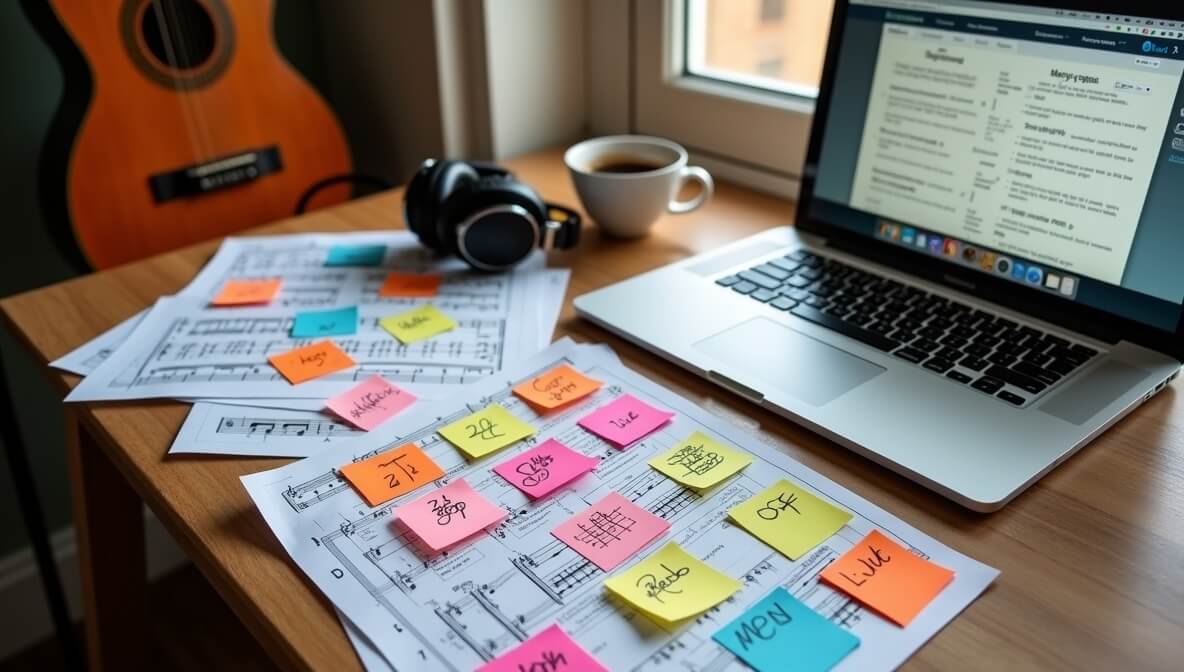August 10, 2025

Can’t afford music lessons or just prefer to go at your own pace? You’re not alone—and you’re not at a disadvantage.
In fact, with the right strategy and a bit of structure, self-taught musicians can achieve serious results. Building your own music curriculum gives you the freedom to focus on what inspires you, while still making well-rounded progress.
Here’s a step-by-step guide to help you build a DIY music learning plan that works, whether you're learning guitar, piano, voice, or even music production.
You can’t build a path without knowing where you want to go.
Ask yourself:
Having a direction will help you focus on the skills that matter most—whether that’s fingerstyle guitar, music theory, vocal control, or DAW mastery.
Tip: Use the SMART goal system (Specific, Measurable, Achievable, Relevant, Time-bound) to create focused outcomes.
A strong DIY curriculum isn’t just about learning songs—it’s about building the foundation that supports everything you play.
Here are five essential pillars:
You don’t need a fancy course—just smart resource selection based on your learning style.
Here’s what many self-taught musicians rely on:
See also: Top 10 YouTube Channels for Learning Guitar Right Now
Structure builds momentum. Here’s a flexible weekly layout you can adapt to any instrument:
Don’t focus on perfection. Even 20–30 minutes daily is enough if you show up consistently.
One of the biggest dangers of going solo? Losing track of your wins.
Keep a practice log or video diary where you:
Even if it feels slow, progress compounds—and looking back is one of the best motivators.
You don’t have to learn alone. The internet is full of free music learning communities where you can:
Try:
Learning tip: Listening to others—even those at your level—can unlock breakthroughs you didn’t know you needed.
Building your own curriculum puts you in charge of your learning—but it doesn’t mean going in blind.
With structure, goals, and feedback loops, a DIY plan can rival traditional lessons. The key is to stay curious, stay consistent, and don’t isolate yourself. Growth takes time—but with the right system, you’ll go farther than you think.
Stay up to date with the latest tips, expert insights, product reviews, and step-by-step guides to help you grow, create, and succeed—no matter your industry or passion.